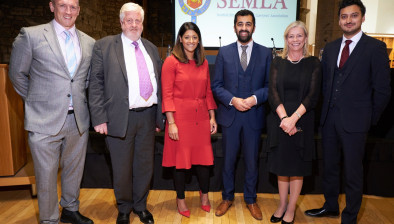English judiciary remains dominated by white men from the bar

There has been little progress in increasing the diversity of the judiciary in England, according to a new report.
JUSTICE’s latest report follows a similar one published in 2017, which explored the structural barriers faced by women, BAME communities, solicitors and those from lower socio-economic backgrounds in reaching the bench.
It assesses the progress that has been made since 2017, outlines areas that remain of critical concern and makes further recommendations for improving judicial diversity.
The report found that while there have been some welcome headline achievements – including two more women justices appointed to the Supreme Court, the appointment of four more solicitors to the High Court and the appointment of Sir Rabinder Singh to the Court of Appeal – most appointments to the senior courts have continued much as before.
There has been some improvement in the percentages of women appointed to the Circuit and High Court bench, however, the overall numbers remain low meaning that progress is fragile. The data demonstrate that there has been negligible improvement in respect of other under-represented groups.
The report concludes that the current approach to judicial diversity is not working. It urges large scale structural and cultural change to deliver a more diverse judiciary. To this end, its recommendations include:
- A system of proper accountability to ensure that the commitment to change is backed up by practical steps and, importantly, results. JUSTICE continues to call for the introduction of “targets with teeth” and the creation of a permanent “Senior Selections Committee” for appointments to the Court of Appeal, Heads of Division and the Supreme Court.
- Establishing a meaningful internal judicial career path where judges can begin their career in the more diverse tribunals, or as district judges. The working party found that the de facto career path into the senior judiciary remains via the fee-paid roles of recorder and deputy High Court judge.
- Cultural change led by the judicial leadership. Any substantial and sustained improvement in the diversity of the judiciary will require those in leadership positions to prioritise and commit to a cultural change, whereby judicial diversity is seen as fundamental to the quality of judging, rather than tangential.
- Tackling affinity bias and ensuring merit is not used as an unconscious proxy for the characteristics, qualities and experience of the current cohort of judges. We welcome the JAC’s recent efforts to better understand and define merit, however we call for further efforts to be made to ensure that the appointments process tests for judicial potential and not prior advocacy experience.
Andrea Coomber, director of JUSTICE, said: “Nearly three years since our last report there has been only modest progress towards a more diverse senior judiciary. Our senior judiciary continues to be dominated by white men from the independent bar.
“We are continually assured that change is right around the corner and yet the homogeneity of appointments to the key feeder roles of recorder and deputy High Court judge give little reason for optimism.
“The judiciary play a critical role in our democracy and hold immense power in society. They can take away people’s liberty, their children, their rights and more. That such power is held by such an unrepresentative group of people – however meritorious – should be of concern to us all.”









